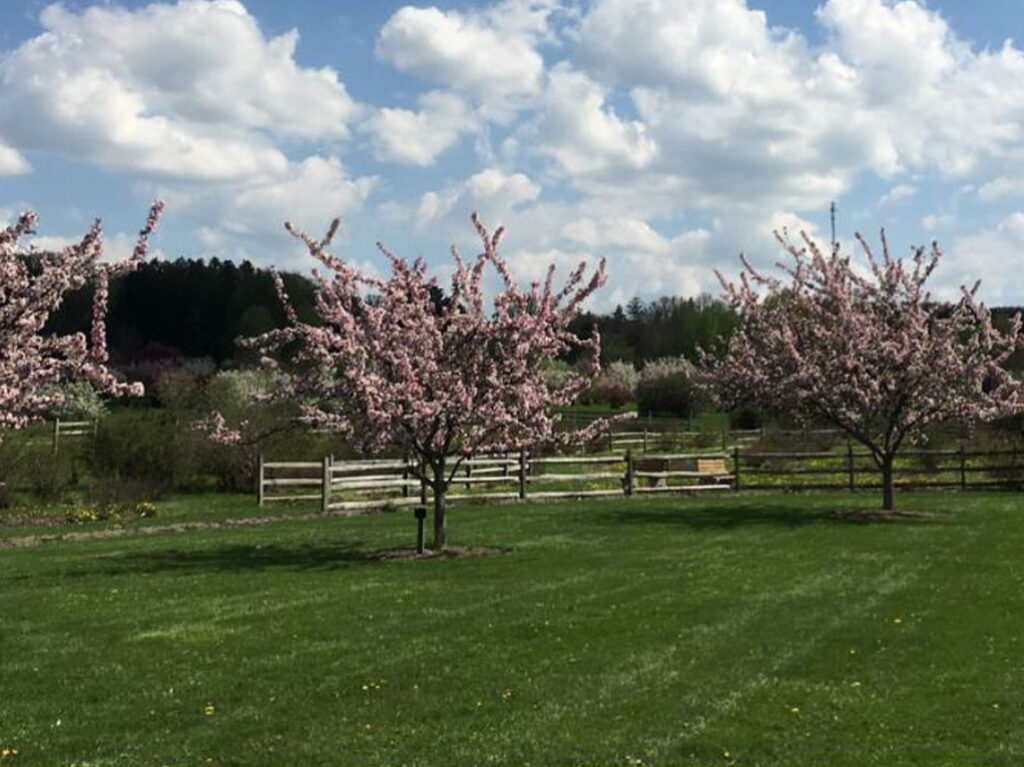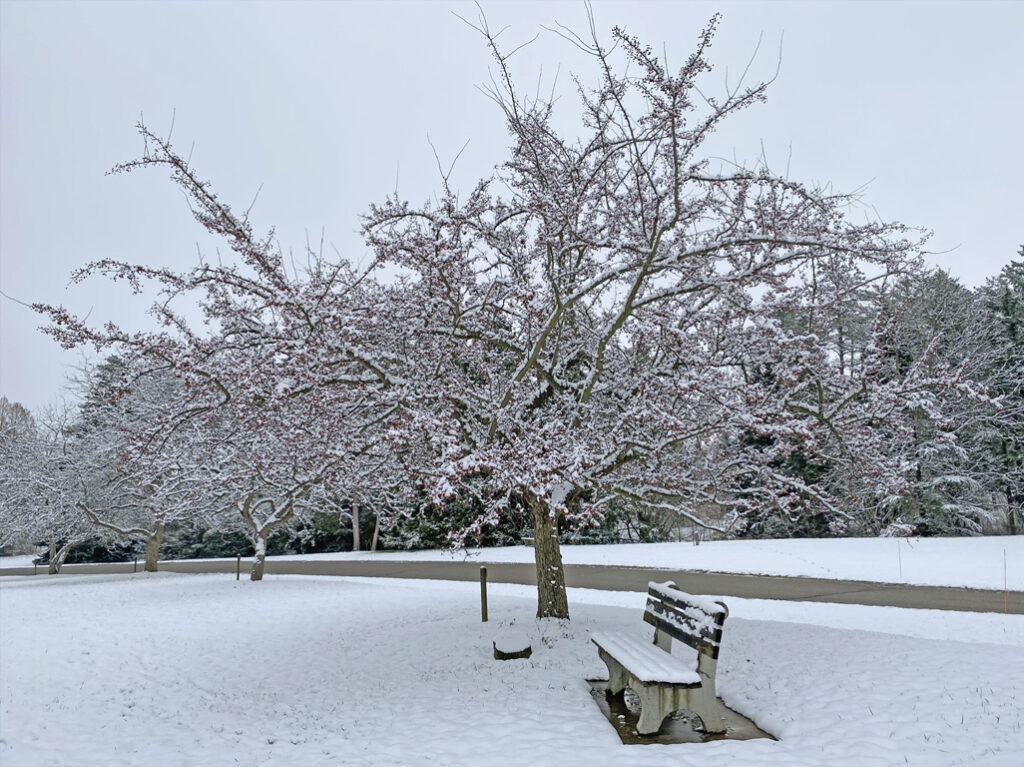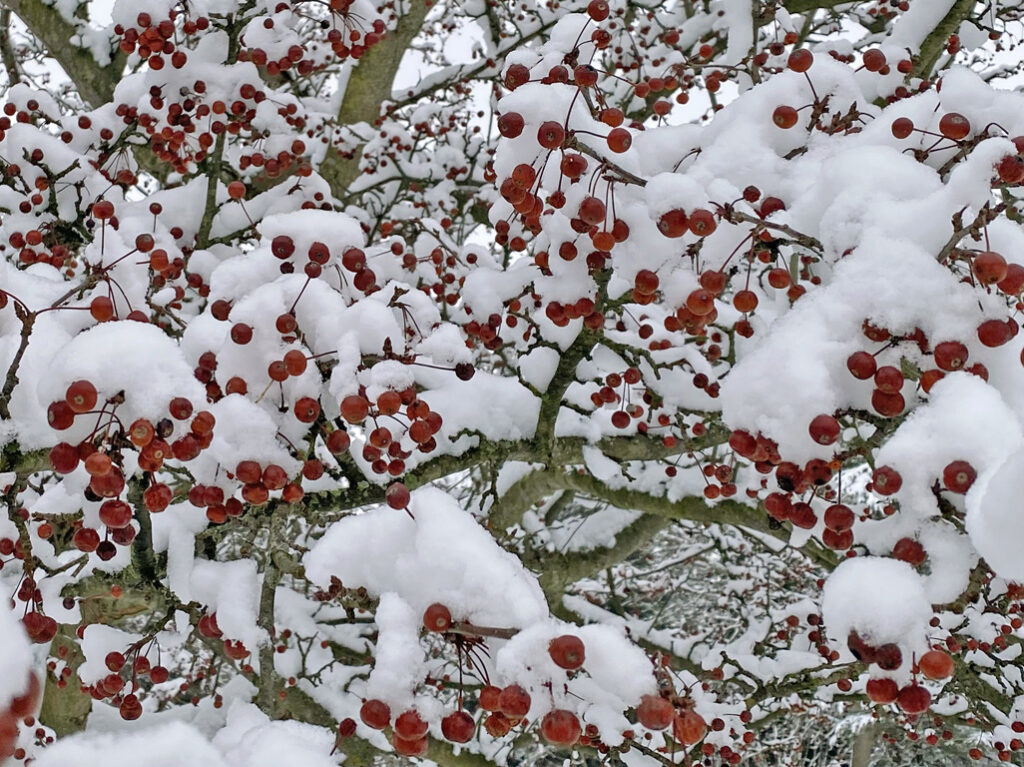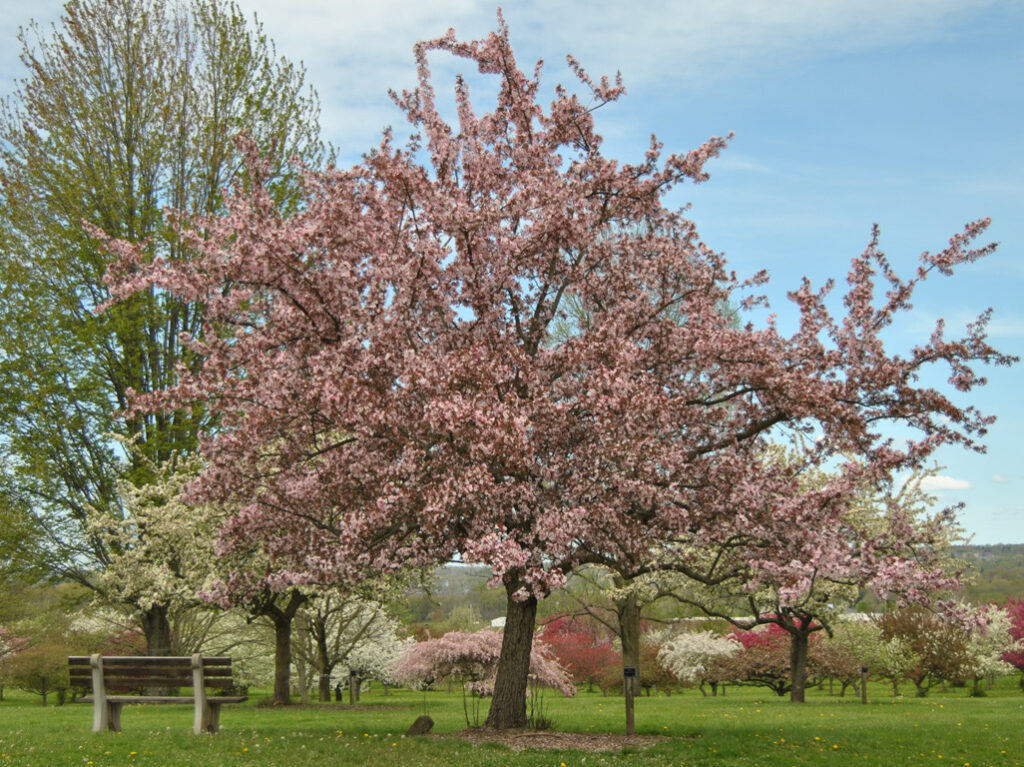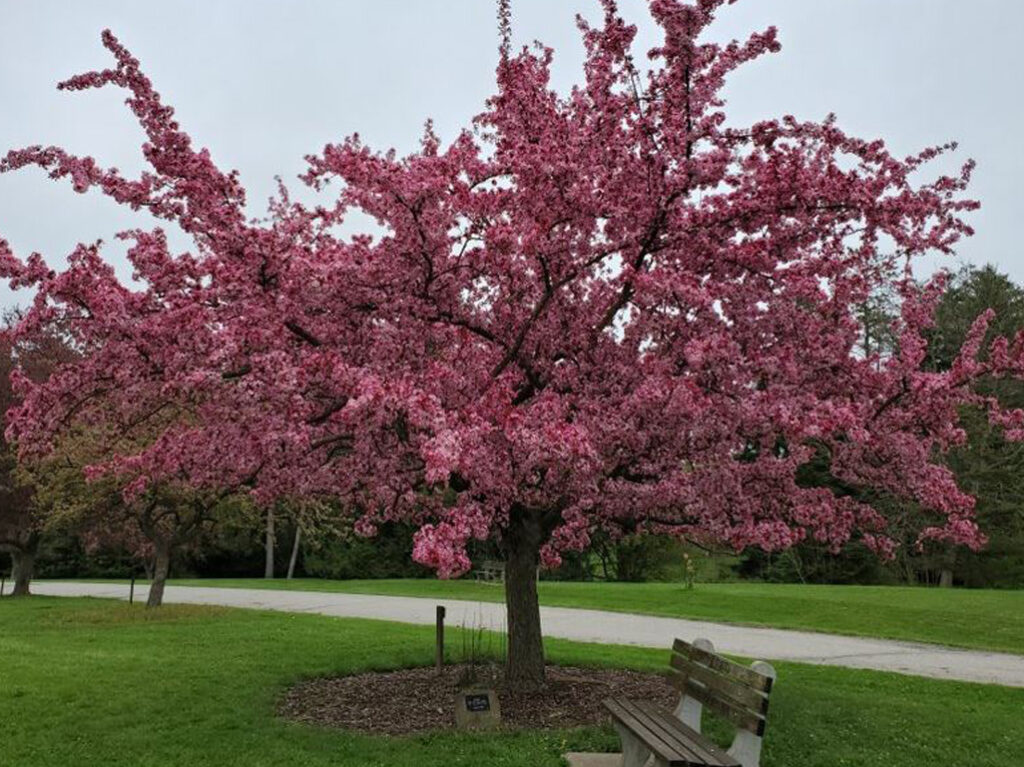
Malus ‘Strawberry Parfait’
Common Name
Strawberry Parfait® Crabapple
Family
Rosaceae (Rose)
Tree or plant type / form
Deciduous tree
Landscape Use
A bold, informal, upright-spreading flowering crabapple useful as a specimen tree or planted in groups.
Season of interest and/or other ornamental feature(s)
‘Strawberry Parfait’ is one of the earliest crabapples to bloom in late April. In addition to the eye-catching buds and flowers, the burgundy to bronze-green foliage of ‘Strawberry Parfait’ is among the most disease resistant of all crabapples grown at Secrest Arboretum. By early fall, dark red fruit hangs conspicuously from its spreading canopy and remains ornamental into early winter; regularly exhibits orange foliage in autumn.
Size at Landscape Maturity
Height: 15-20 feet; Width: 20 feet wide in 20 years
Light exposure
Full sun
USDA Hardiness zones
4 – 8
Origin / Native locale
A cultivated variety selected in the late 1980’s at Princeton Nursery in New Jersey from seedlings of the Chinese species Malus hupehensis
Wildlife Value (incl. pollinators)
The pomes (apples) are consumed by a variety of birds when they soften in early winter.
Soil Type & Drainage
Adaptable to a range of soil types provided they are not consistently wet
Tolerances
Drought tolerant once established; highly resistant to apple scab and rust, the primary fungal pathogens that infect and can defoliate most ornamental crabapples
Leaf Description
Foliage is reddish purple in spring, becoming bronze green in summer
Bloom Time in Northeast Ohio
Late April to early May
Flower Description
Deep pink in bud with rosy pink flowers having a darker pink edge, usually taking on a two-tone effect before fading to pale pink. ‘Strawberry Parfait’ exhibits a consistently heavy bloom over a relatively long period each spring.
Cone / Fruit
The small apples (botanically termed pomes) are glossy, deep red, and persist into early winter
Available at
Secrest Arboretum Plant Discovery Days; rare in the nursery trade
Use the Secrest Aboretum Explorer to find locations where this plant is located on the Wooster campus.
